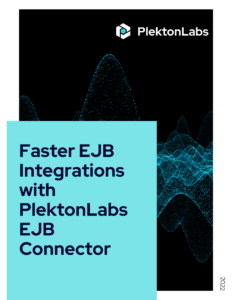Data integration has come a long way since its beginning in the 80s and 90s. Nowadays it is impossible to picture how enterprises would function without it. And when it comes to enterprise data integration, the future looks great. In fact, according to a market research report published by MarketsandMarkets, the integration market will be worth 12.24 Billion USD in 2022.
And on that note, today’s blog will be all about data integration, a refresher on why it is so crucial to the businesses in the fintech industry, as well as challenges faced during the integration process.
What Makes Data Integration Such a Necessity?
Most people reading this will already know how to define the term. But for old times’ sake, data integration is the method of merging data from various sources into one simplified view. This unified, bird’s eye view of data makes it easier to handle and leverage information to perform analytics.
It typically starts with the ingestion process and involves steps like cleansing and ETL mapping. The data integration looks something like this: a client sends a request to the master server for data. The master server ingests the required data from different sources. Once this data is extracted from the sources, it is combined into a single, cohesive data set and then sent back to the client.
Besides the sheer convenience of the whole process, integration has a whole host of benefits. The biggest benefit is that it breaks down data silos and makes relevant information more accessible to businesses. At the same time, it speeds up the time taken to examine, analyze, and present data. This boosts efficiency and productivity, allowing business leaders to make real-time data-driven decisions.
In other words, data integration allows analytics tools to deliver useful and relevant business intelligence. It takes information from different platforms and sources and compiles everything to give organizations an all-encompassing 360-degree view of data that makes it easier and faster to make conclusions, understand causations, and draw correlations in patterns and industry trends.
Data Integration in Action
Enterprises and organizations tend to use integration tools and platforms like MuleSoft to achieve the following:
- Get an Edge over Competitors
Many businesses can manage without data integration when they first start out but find that it becomes increasingly difficult to manage massive volumes of data as they grow. Integration streamlines processes and sales, giving businesses full control over access to data. They can identify and make use of more opportunities due to the insight derived from this data, which helps them beat out their competition.
- Making Better Use of Data
Businesses tend to receive oodles of data from an ever-increasing customer base. Sifting through this data can seem impossible, but data integration makes it possible to build data lakes and warehouses. This in turn makes it easier for business leaders to leverage this data and use it to their advantage whenever needed, turning data into one of the enterprise’s digital assets.
- Easier Strategizing
The best thing integration has done for businesses is to simplify business intelligence and analyze data to create strategies based on actionable, real-time data. Data-driven strategies are bound to be failproof as they are not based on predictive analysis for decision-making.
Roadblocks to Successful Integration
Even with countless tools like connectors, carefully planned strategies, and modern methods like ETL or cloud-based data integration, many businesses still fail in their integration attempts.
Why is that? It is mainly because many business leaders do not have the patience to see the long-term results. Similarly, data integration needs careful monitoring and maintenance, and the system needs to be checked to make sure it meets regulations and follows best practices.
Sometimes, data integration needs information stored away in legacy systems. However, this data can often do not have certain markers like date-and-time stamps, which can cause errors and confusion later on.
Inability to adapt to changing circumstances can also prevent businesses from reaping the benefits of integration. Data is now sourced from processes like IoT, IoB, cloud, and many others, and some businesses have trouble adjusting to these innovations in technology.
In a Nutshell
Data integration can help both small and large businesses by saving time, boosting efficiency, reducing errors. It creates actionable business intelligence that can be used for improved decision-making and crafting better strategies for the future.
Whether you want to stand out from among your competitors, leverage better business analytics, or simply derive greater value from your business processes, investing in an integration strategy is guaranteed to give you results. And PlektonLabs is fully equipped to guide you through your integration journey.




